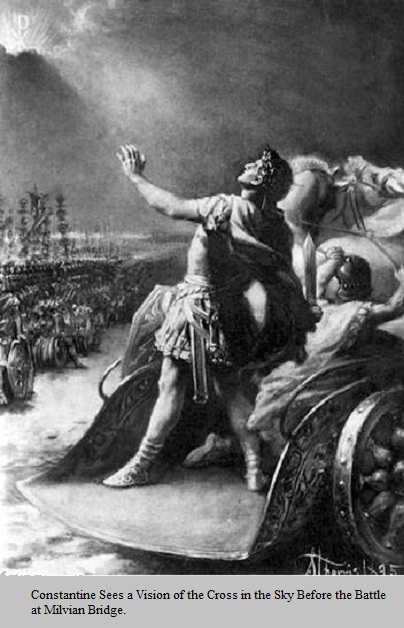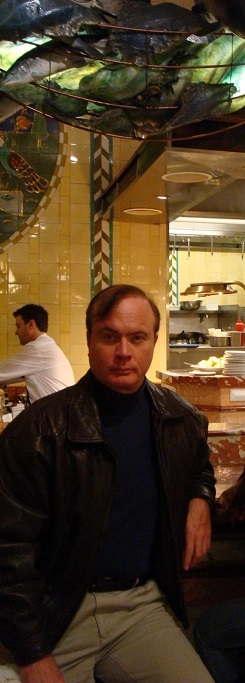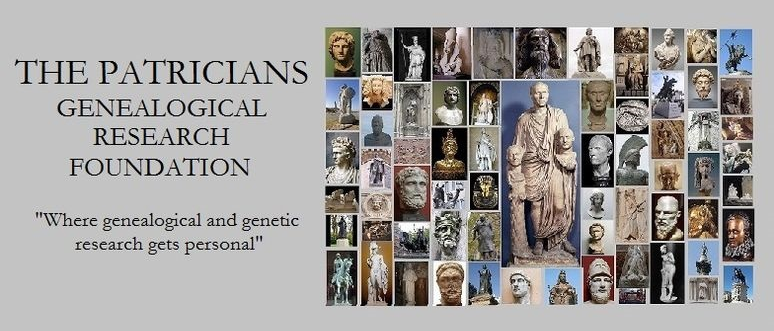








According to Geoffrey of Monmouth, Constantine’s mother, Saint Helena, was the daughter of Colius Coel II (219 – 262; 2nd great-grandson of Colius Coel, 1st King of Britons). She was also a descendant of Anna of Arimathea, daughter of Joseph of Arimathea, and a cousin of Lord Jesus. Her other pedigree states she was born in Bithynia, a daughter of an innkeeper, who gave birth to Constantine after making the acquaintance of a young military officer, Flavius Valerius Constantius I (242 – 306), and becoming his concubine.
Of the two pedigrees, Geoffrey’s is much more romantic, especially in considering Saint Helena as a descendant of Anna of Arimathea. Her father was the Roman governor of Cornwall in charge of tin mining and smelted ore exportation around the world, but mainly to Jerusalem. His nephew Jesus first sailed there with his uncle from Jerusalem when he was a boy. After the Crucifixion, Joseph returned with the Holy Grail to Cornwall where he spent the remainder of his life. The recovery of the lost holy relic is the primary source of the adventure of the Camelot King Arthur and the Knights of the Round Table myth (?). King Arthur was also a descendant of Anna of Arimathea as well as Dareca verch Calpurnius (St. Patrick‘s sister).
In 306 Constantine succeeded his father as emperor of the Western Roman Empire after he died in Yorkshire, Britain of battlefield wounds. He and his son were engaged in a war to quell invading Picts. In defeating the Emperor of the East in a military campaign in 324, he became the sole emperor of both East and West. By 330 he moved the capital of the Roman Empire to Constantinople.
The First Council of Nicaea (325) was Constantine’s attempt to amalgamate the ragtag “Christian” religion into one that he and his successors would later absolutely control. The New Testament arose from the effort. It’s interesting to note that out of the 280 or so delegates who convened in Nicaea only 5 represented the West. He obliviously perceived, given his passion for Christian beliefs that he professed after his conversion to Christianity, that managing the hearts and souls of vassals of the Roman ruling state would succeed more if predicated on a religion that preferred spiritual salvation in return for the self-sacrifice of their mortality to its benefit. My Norse ancestors were late in adopting Christianity as a religious belief, maybe as late as the ninth century and beyond, but it was, perhaps to them who did, an alliance that served to further their territorial expansion ambitions, often as vassals, in effect, of the Roman Catholic Church. Chief among them was Ganger Hrólf “Rollo” (860 – 930) 1st Duke of Normandy, Count of Rouen.
The establishment of the Roman Catholic Church and the quick spread of Christianity thereafter later proved to be rather fortuitous for Rome, especially after the official fall of the Roman Empire when German chieftain Odoacer deposed the last Roman emperor of the West, Romulus Augustulus, in 476. (Odoacer was an agnatic descendant of Arminius “The Great” (17 BC – 21 AD) Prince of Teutons .) By the time of the Great Schism in 1054, the territory of the Roman Catholic Church encompassed as much if not more than the Roman Empire controlled at the height of its military might in 211 AD. Add the expansion of Catholicism as a result of the European conquest of the Americas and elsewhere, the church directly controlled the spiritual and secular lives of its parishioners way than the Roman Empire ever did, perhaps twice as many, putatively.
The succession of Popes, both before and after the fall of Rome, were mainly Italians (217 out of 266, 88 from Rome) of noble birth. Most were as politically powerful as Roman emperors, perhaps more so, especially during the zenith of the Holy Roman Empire. St Linus, Lleyn ap Caratacus ( – 76) Founder of the Roman Catholic Church was arguably the first Bishop of Rome.
Byzas of Megara (fl. 660 BC) was the eponymic founder of Byzantium, the city later known as Constantinople and Istanbul today. Seeking a new land to colonize he made a pilgrimage to the Temple of Apollo to seek spiritual guidance as to where he should he should go. The Oracle of Delphi responded, “Go to the land opposite the city of the blind.” He and his tribe spent the next forty years wandering through the wilderness before happening upon the western shores of the Bosphorus. The Chalcedon settlement on the opposite side was occupied by Megaran Greeks, his mortal rivals and cousins, so he planted his settlement on the more favorably hospitable land there. The fount of Wesrtern Civilization thereafter, it was a Greek-speaking culture until the Ottoman Turks took control of the city/state during the 15th century AD.
He’s ranked #21 in Hart’s Most Influential People in History – Top 500 List (125).
Related ancestral blog articles
Constantine the Great, Emperor of Rome
Birth 27 FEB 287 in Naissus, Serbia, Nis, Yugoslavia
Death 22 MAY 337 in Nicomedia, Bithynia, Izmit, Turkey
Ancestry.com citation/Lineages
48th great-grandfather STRATHCLYDE-VERE-BEAUCHAMP-MOWBRAY-GRAY-OGLE-HERON-COLLINGWOOD-COLLINS
53rd great-grandfather VALENTINIAN-MEROVING-FERREOLUS-PEPIN-VERE-WARREN-HOLLAND-SIMMONS-COLLINS
60th great-grandfather POWYS-TEWDR-HASTINGS-HERON-COLLINGWOOD-COLLINS
3rd cousin 52x removed COELING-DESPOSYNI-MEROVING-CAPET-D’EVREUX-ROHAN-LANDRY-BOURG-CYR-BRULE
7th cousin 55x removed COELING-ASGARD-WESSEX-HOWARD-WOOD-COLLINS
SOURCES
Global diffusion of Christianity
Jesus in Cornwall YouTube videos
Constantine the Great and the Christian Revolution,
The Decline and Fall of the Roman Empire
The History of the Church: From Christ to Constantine
The Patricians, A Genealogical Study – Ebook Editions US$7.95


Steven Wood Collins (1952 – ) Antiquarian, Genealogist, Novelist


115 replies on “Constantine the Great I (279 – 337) First Christian Emperor of Rome, Invoker of First Council of Nicaea, Roman Catholic Saint, Eponym of Constantinople”
[…] Constantine the Great I (279 – 337) First Christian Emperor of Rome, Saint 6GGF […]
LikeLike
[…] Constantine the Great I (279 – 337) First Christian Emperor of Rome, Saint 6GGF […]
LikeLike
[…] Constantine the Great I (279 – 337) First Christian Emperor of Rome, Saint 6GGF […]
LikeLike
[…] Constantine the Great I (279 – 337) First Christian Emperor of Rome, Saint 6GGF […]
LikeLike
[…] Constantine the Great I (279 – 337) First Christian Emperor of Rome, Saint 6GGF […]
LikeLike
[…] Constantine the Great I (279 – 337) First Christian Emperor of Rome, Saint 6GGF […]
LikeLike
[…] Constantine the Great I (279 – 337) First Christian Emperor of Rome, Saint 6GGF […]
LikeLike
[…] Constantine the Great I (279 – 337) First Christian Emperor of Rome, Saint 6GGF […]
LikeLike
[…] Constantine the Great I (279 – 337) First Christian Emperor of Rome, Saint 6GGF […]
LikeLike
[…] Constantine the Great I (279 – 337) First Christian Emperor of Rome, Saint 6GGF […]
LikeLike
[…] Constantine the Great I (279 – 337) First Christian Emperor of Rome, Saint 6GGF […]
LikeLike
[…] Constantine the Great I (279 – 337) First Christian Emperor of Rome, Saint 6GGF […]
LikeLike
[…] Constantine the Great I (279 – 337) First Christian Emperor of Rome, Saint 6GGF […]
LikeLike
[…] Constantine the Great I (279 – 337) First Christian Emperor of Rome, Saint 6GGF […]
LikeLike
[…] Constantine the Great I (279 – 337) First Christian Emperor of Rome, Saint 6GGF […]
LikeLike
[…] Constantine the Great I (279 – 337) First Christian Emperor of Rome, Saint 6GGF […]
LikeLike
[…] Constantine the Great I (279 – 337) First Christian Emperor of Rome, Saint 6GGF […]
LikeLike
[…] Constantine the Great I (279 – 337) First Christian Emperor of Rome, Saint 6GGF […]
LikeLike
[…] Constantine the Great I (279 – 337) First Christian Emperor of Rome, Saint 6GGF […]
LikeLike
[…] Constantine the Great I (279 – 337) First Christian Emperor of Rome, Saint 6GGF […]
LikeLike
[…] Constantine the Great I (279 – 337) First Christian Emperor of Rome, Saint 6GGF […]
LikeLike
[…] Constantine the Great I (279 – 337) First Christian Emperor of Rome, Saint 6GGF […]
LikeLike
[…] Constantine the Great I (279 – 337) First Christian Emperor of Rome, Saint 6GGF […]
LikeLike
[…] Constantine the Great I (279 – 337) First Christian Emperor of Rome, Saint 6GGF […]
LikeLike
[…] Constantine the Great I (279 – 337) First Christian Emperor of Rome, Saint 6GGF […]
LikeLike
[…] Constantine the Great I (279 – 337) First Christian Emperor of Rome, Saint 6GGF […]
LikeLike
[…] Constantine the Great I (279 – 337) First Christian Emperor of Rome, Saint 6GGF […]
LikeLike
[…] Constantine the Great I (279 – 337) First Christian Emperor of Rome, Saint 6GGF […]
LikeLike
[…] Constantine the Great I (279 – 337) First Christian Emperor of Rome, Saint 6GGF […]
LikeLike
[…] Constantine the Great I (279 – 337) First Christian Emperor of Rome, Saint 6GGF […]
LikeLike
[…] Constantine the Great I (279 – 337) First Christian Emperor of Rome, Saint 6GGF […]
LikeLike
[…] Constantine the Great I (279 – 337) First Christian Emperor of Rome, Saint 6GGF […]
LikeLike
[…] Constantine the Great I (279 – 337) First Christian Emperor of Rome, Saint 6GGF […]
LikeLike
[…] Constantine the Great I (279 – 337) First Christian Emperor of Rome, Saint 6GGF […]
LikeLike
[…] Constantine the Great I (279 – 337) First Christian Emperor of Rome, Saint 6GGF […]
LikeLike
[…] Constantine the Great I (279 – 337) First Christian Emperor of Rome, Saint 6GGF […]
LikeLike
[…] Constantine the Great I (279 – 337) First Christian Emperor of Rome, Saint 6GGF […]
LikeLike
[…] Constantine the Great I (279 – 337) First Christian Emperor of Rome, Saint 6GGF […]
LikeLike
[…] Constantine the Great I (279 – 337) First Christian Emperor of Rome, Saint 6GGF […]
LikeLike
[…] Constantine the Great I (279 – 337) First Christian Emperor of Rome, Saint 6GGF […]
LikeLike
[…] Constantine the Great I (279 – 337) First Christian Emperor of Rome, Saint 6GGF […]
LikeLike
[…] Constantine the Great I (279 – 337) First Christian Emperor of Rome, Saint 6GGF […]
LikeLike
[…] Constantine the Great I (279 – 337) First Christian Emperor of Rome, Saint 6GGF […]
LikeLike
[…] Constantine the Great I (279 – 337) First Christian Emperor of Rome, Saint 6GGF […]
LikeLike
[…] Constantine the Great I (279 – 337) First Christian Emperor of Rome, Saint 6GGF […]
LikeLike
[…] Constantine the Great I (279 – 337) First Christian Emperor of Rome, Saint 6GGF […]
LikeLike
[…] Constantine the Great I (279 – 337) First Christian Emperor of Rome, Saint 6GGF […]
LikeLike
[…] Constantine the Great I (279 – 337) First Christian Emperor of Rome, Saint 6GGF […]
LikeLike
[…] Constantine the Great I (279 – 337) First Christian Emperor of Rome, Saint 6GGF […]
LikeLike
[…] Constantine the Great I (279 – 337) First Christian Emperor of Rome, Saint 6GGF […]
LikeLike
[…] Constantine the Great I (279 – 337) First Christian Emperor of Rome, Saint 6GGF […]
LikeLike
[…] Constantine the Great I (279 – 337) First Christian Emperor of Rome, Saint 6GGF […]
LikeLike
[…] Constantine the Great I (279 – 337) First Christian Emperor of Rome, Saint 6GGF […]
LikeLike
[…] Constantine the Great I (279 – 337) First Christian Emperor of Rome, Saint 6GGF […]
LikeLike
[…] Constantine the Great I (279 – 337) First Christian Emperor of Rome, Saint 6GGF […]
LikeLike
[…] Constantine the Great I (279 – 337) First Christian Emperor of Rome, Saint 6GGF […]
LikeLike
[…] Constantine the Great I (279 – 337) First Christian Emperor of Rome, Saint 6GGF […]
LikeLike
[…] Constantine the Great I (279 – 337) First Christian Emperor of Rome, Saint 6GGF […]
LikeLike
[…] Constantine the Great I (279 – 337) First Christian Emperor of Rome, Saint 6GGF […]
LikeLike
[…] Constantine the Great I (279 – 337) First Christian Emperor of Rome, Saint 6GGF […]
LikeLike
[…] Constantine the Great I (279 – 337) First Christian Emperor of Rome, Saint 6GGF […]
LikeLike
[…] Constantine the Great I (279 – 337) First Christian Emperor of Rome, Saint 6GGF […]
LikeLike
[…] Constantine the Great I (279 – 337) First Christian Emperor of Rome, Saint 6GGF […]
LikeLike
[…] Constantine the Great I (279 – 337) First Christian Emperor of Rome, Saint 6GGF […]
LikeLike
[…] Constantine the Great I (279 – 337) First Christian Emperor of Rome, Saint 6GGF […]
LikeLike
[…] Constantine the Great I (279 – 337) First Christian Emperor of Rome, Saint 6GGF […]
LikeLike
[…] Constantine the Great I (279 – 337) First Christian Emperor of Rome, Saint 6GGF […]
LikeLike
[…] Constantine the Great I (279 – 337) First Christian Emperor of Rome, Saint 6GGF […]
LikeLike
[…] Constantine the Great I (279 – 337) First Christian Emperor of Rome, Saint 6GGF […]
LikeLike
[…] Constantine the Great I (279 – 337) First Christian Emperor of Rome, Saint 6GGF […]
LikeLike
[…] Constantine the Great I (279 – 337) First Christian Emperor of Rome, Saint 6GGF […]
LikeLike
[…] Constantine the Great I (279 – 337) First Christian Emperor of Rome, Saint 6GGF […]
LikeLike
[…] Constantine the Great I (279 – 337) First Christian Emperor of Rome, Saint 6GGF […]
LikeLike
[…] Constantine the Great I (279 – 337) First Christian Emperor of Rome, Saint 6GGF […]
LikeLike
[…] Constantine the Great I (279 – 337) First Christian Emperor of Rome, Saint 6GGF […]
LikeLike
[…] Constantine the Great I (279 – 337) First Christian Emperor of Rome, Saint 6GGF […]
LikeLike
[…] Constantine the Great I (279 – 337) First Christian Emperor of Rome, Saint 6GGF […]
LikeLike
[…] Constantine the Great I (279 – 337) First Christian Emperor of Rome, Saint 6GGF […]
LikeLike
[…] Constantine the Great I (279 – 337) First Christian Emperor of Rome, Saint 6GGF […]
LikeLike
[…] Constantine the Great I (279 – 337) First Christian Emperor of Rome, Saint 6GGF […]
LikeLike
[…] Constantine the Great I (279 – 337) First Christian Emperor of Rome, Saint […]
LikeLike
[…] Constantine the Great I (279 – 337) First Christian Emperor of Rome, Saint […]
LikeLike
[…] Constantine the Great I (279 – 337) First Christian Emperor of Rome, Saint 6GGF […]
LikeLike
[…] Constantine the Great I (279 – 337) First Christian Emperor of Rome, Saint […]
LikeLike
[…] Constantine the Great I (279 – 337) First Christian Emperor of Rome, Saint 6GGF […]
LikeLike
[…] Constantine the Great I (279 – 337) First Christian Emperor of Rome, Saint 6GGF […]
LikeLike
[…] Constantine the Great I (279 – 337) First Christian Emperor of Rome, Saint […]
LikeLike
[…] Constantine the Great I (279 – 337) First Christian Emperor of Rome, Saint 6GGF […]
LikeLike
[…] Constantine the Great I (279 – 337) First Christian Emperor of Rome, Saint 6GGF […]
LikeLike
[…] Constantine the Great I (279 – 337) First Christian Emperor of Rome, Saint 6GGF d […]
LikeLike
[…] Constantine the Great I (279 – 337) First Christian Emperor of Rome, Saint […]
LikeLike
[…] Constantine the Great I (279 – 337) First Christian Emperor of Rome, Saint […]
LikeLike
[…] mother an agnatic descendant of Constantine the Great I (279 – 337) First Christian Emperor of Rome, Saint […]
LikeLike
[…] Constantine the Great I (279 – 337) First Christian Emperor of Rome, Saint […]
LikeLike
[…] Constantine the Great I (279 – 337) First Christian Emperor of Rome, Saint […]
LikeLike
[…] Constantine the Great I (279 – 337) First Christian Emperor of Rome, Saint […]
LikeLike
[…] Constantine the Great I (279 – 337) First Christian Emperor of Rome, Saint […]
LikeLike
[…] Constantine the Great I (279 – 337) First Christian Emperor of Rome, Saint […]
LikeLike
[…] Constantine the Great I (279 – 337) First Christian Emperor of Rome, Saint […]
LikeLike
[…] Constantine the Great I (279 – 337) First Christian Emperor of Rome, Saint […]
LikeLike
[…] Constantine the Great I (279 – 337) First Christian Emperor of Rome, Saint […]
LikeLike
[…] guard. Over time praefects became so powerful (and dangerous) within the Roman government that Constantine the Great (279 – 337) stripped them of their military powers. Thereafter they served as […]
LikeLike
[…] Constantine the Great I (279 – 337) First Christian Emperor of Rome, Saint […]
LikeLike
[…] Constantine the Great I (279 – 337) First Christian Emperor of Rome, Saint […]
LikeLike
[…] Constantine the Great I (279 – 337) First Christian Emperor of Rome, Saint […]
LikeLike
[…] Constantine the Great I (279 – 337) First Christian Emperor of Rome, Saint […]
LikeLike
[…] Constantine the Great I (279 – 337) First Christian Emperor of Rome, Saint […]
LikeLike
[…] Constantine the Great I (279 – 337) First Christian Emperor of Rome, Invoker of First Council … […]
LikeLike
[…] #21 Constantine the Great […]
LikeLike
[…] of BYZANTIUM (453? – ?) maternal descendant of Constantine `the Great’ (279 – […]
LikeLike
[…] #21 Constantine the Great […]
LikeLike
[…] #21 Constantine the Great […]
LikeLike
[…] #21 Constantine the Great […]
LikeLike
[…] Constantine the Great I (279 – 337) First Christian Emperor of Rome, Invoker of First Council … […]
LikeLike
[…] Constantine the Great I (279 – 337) First Christian Emperor of Rome, Invoker of First Council … […]
LikeLike